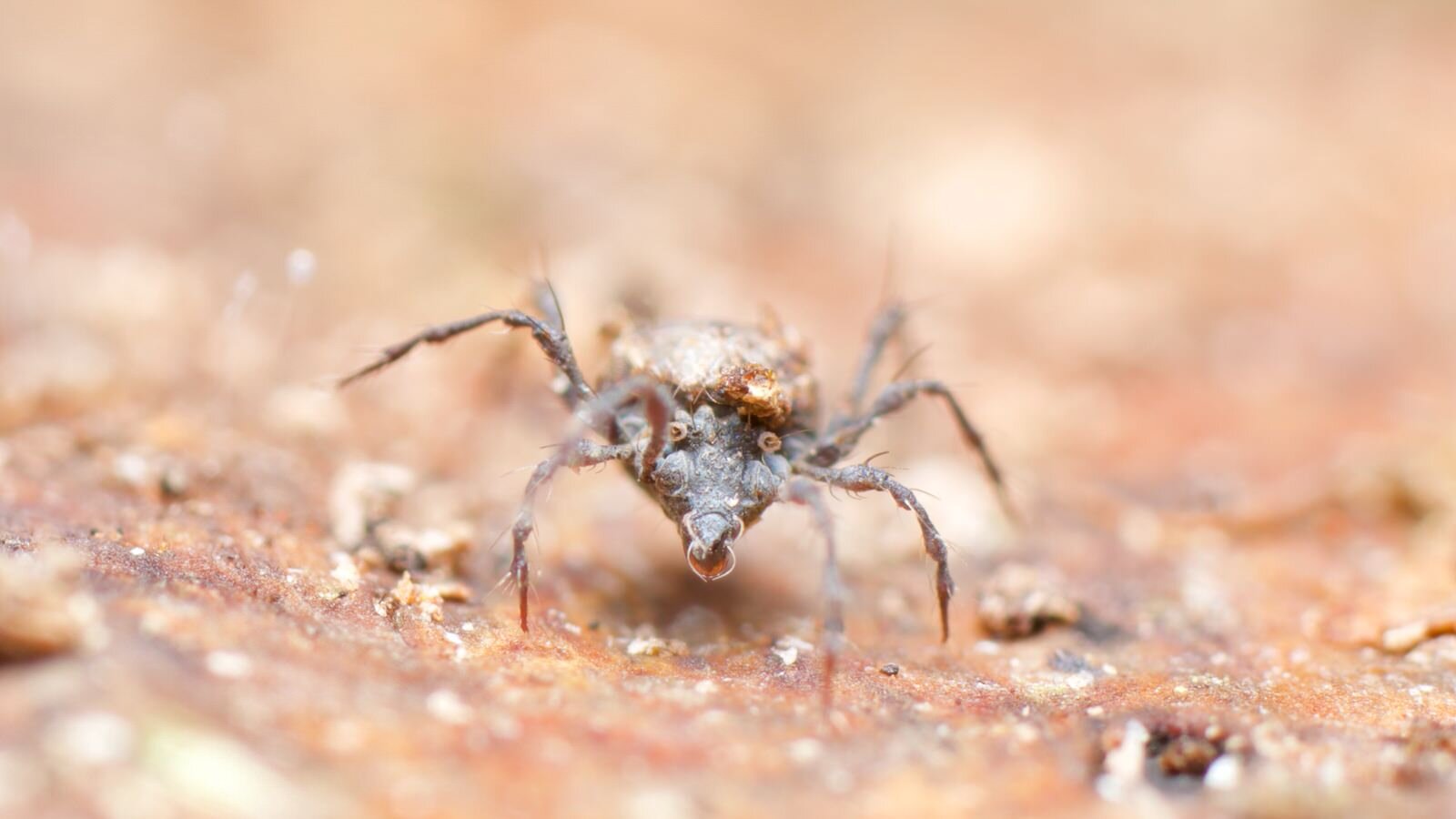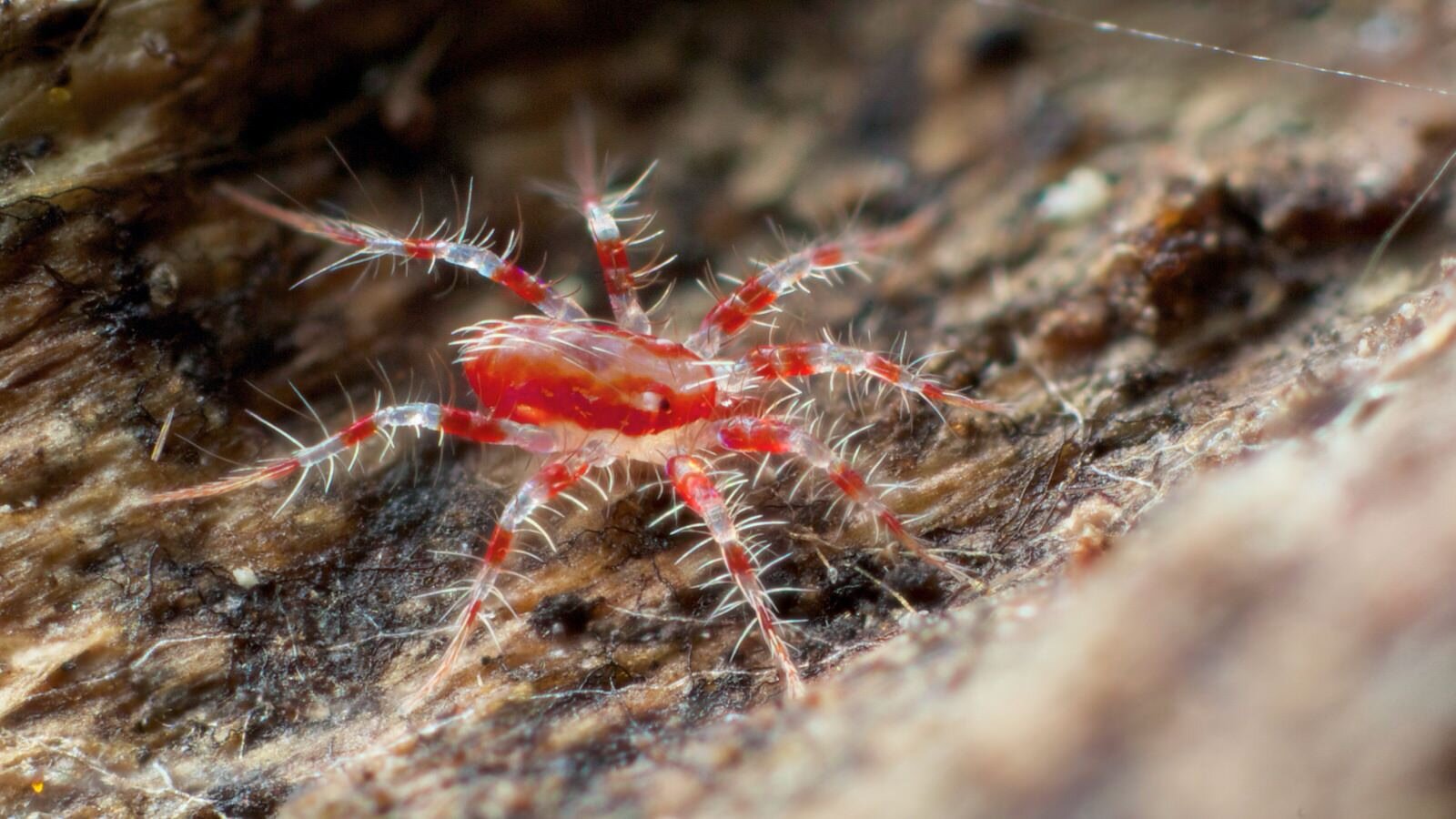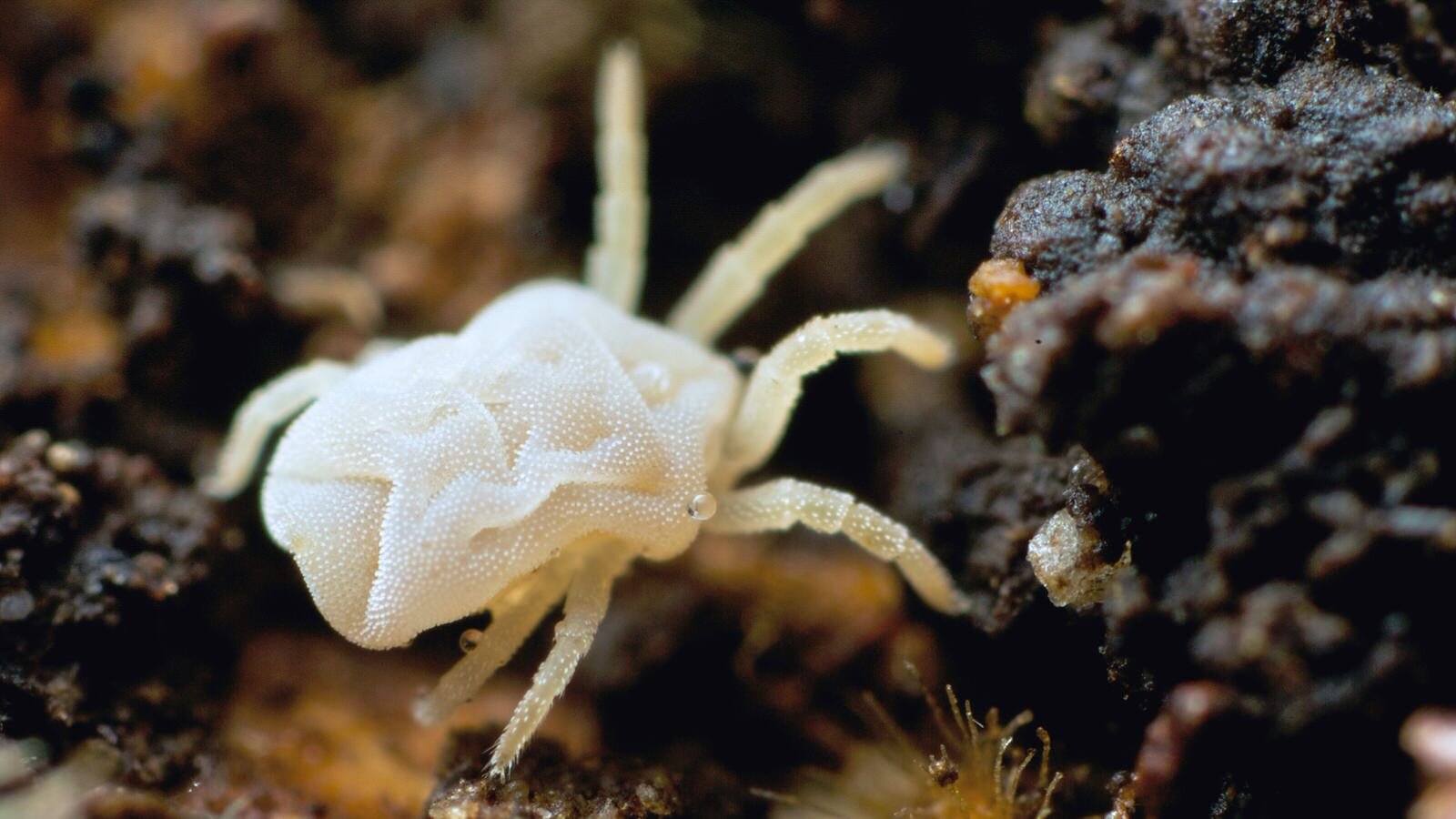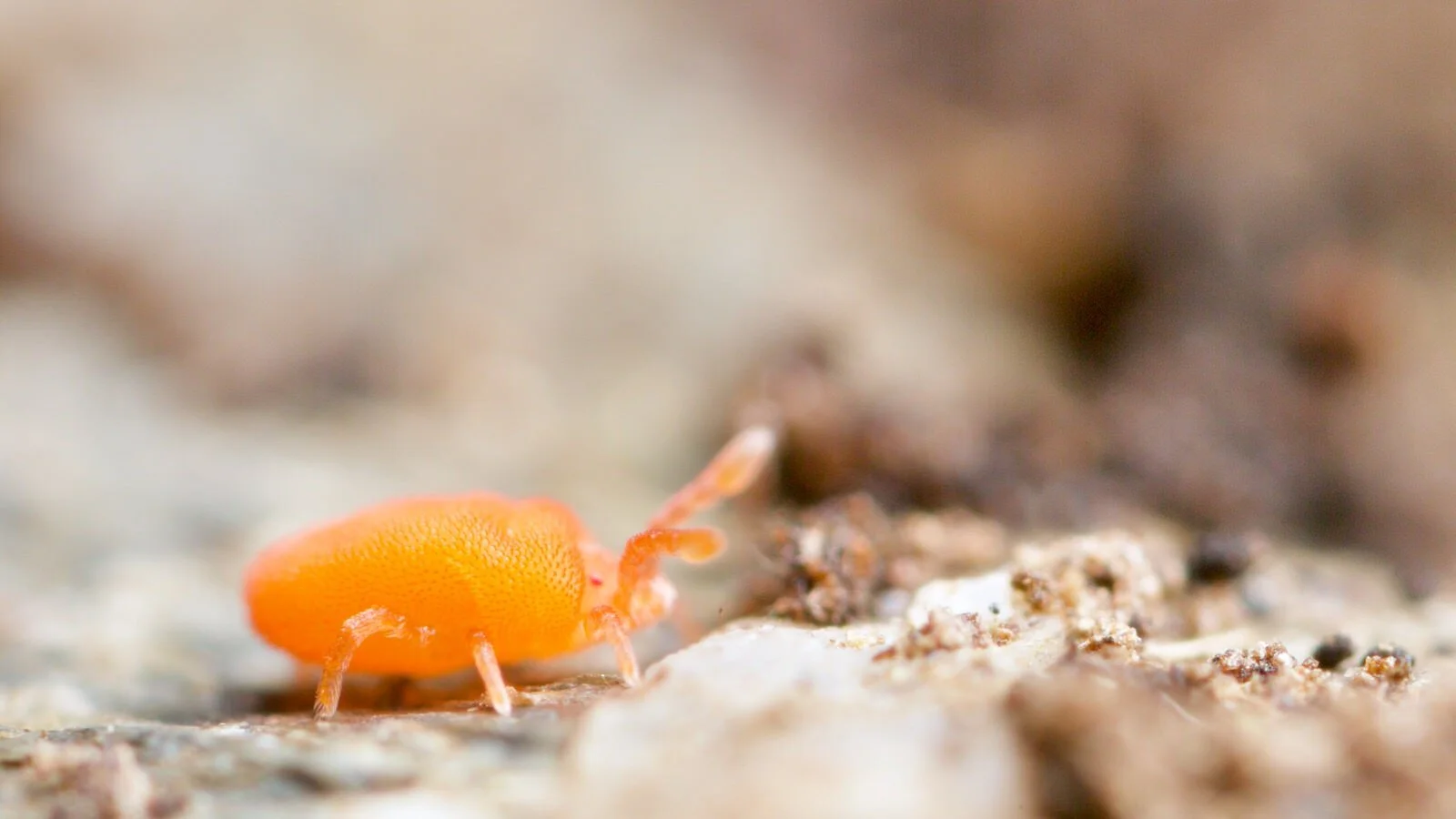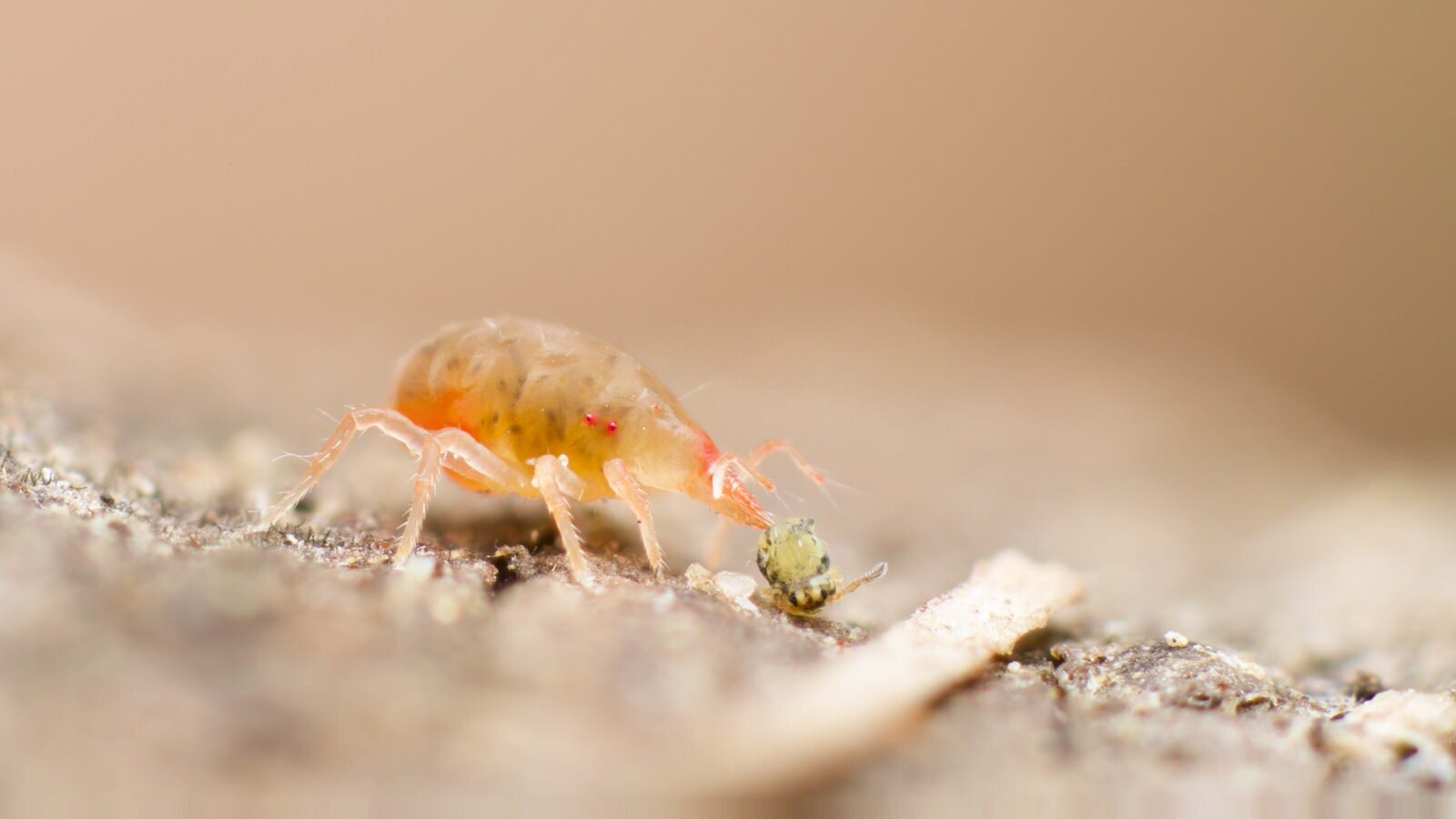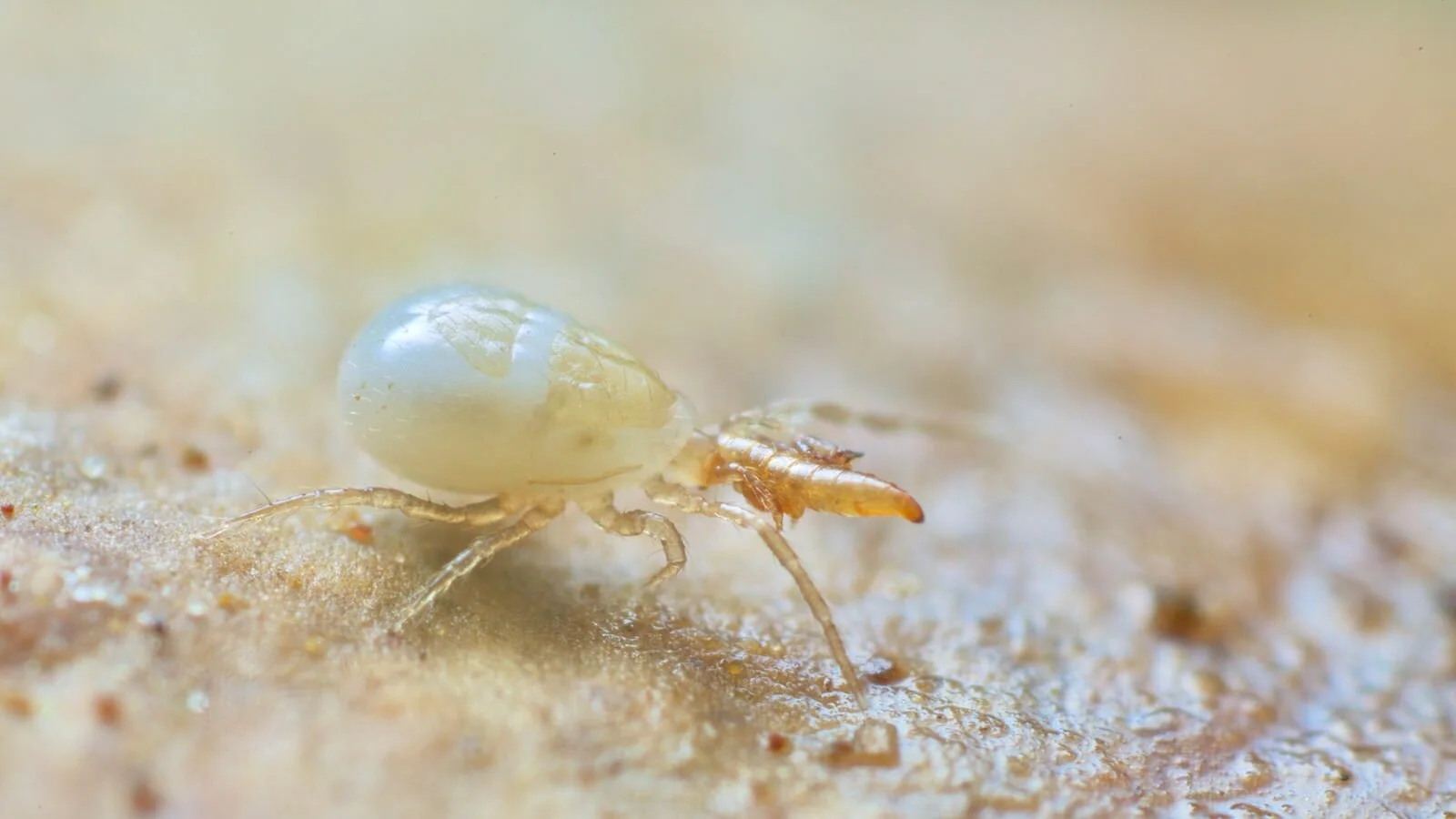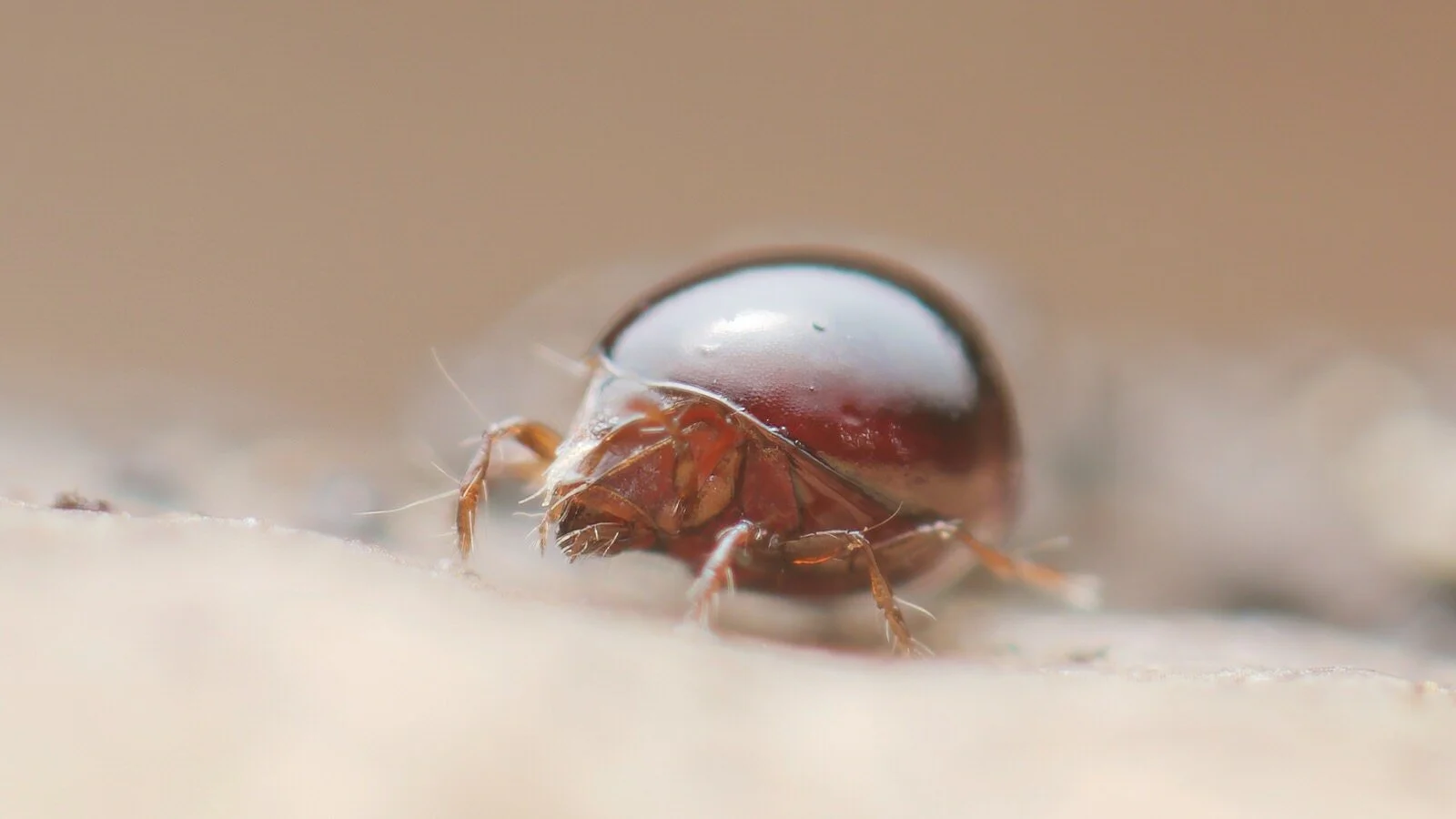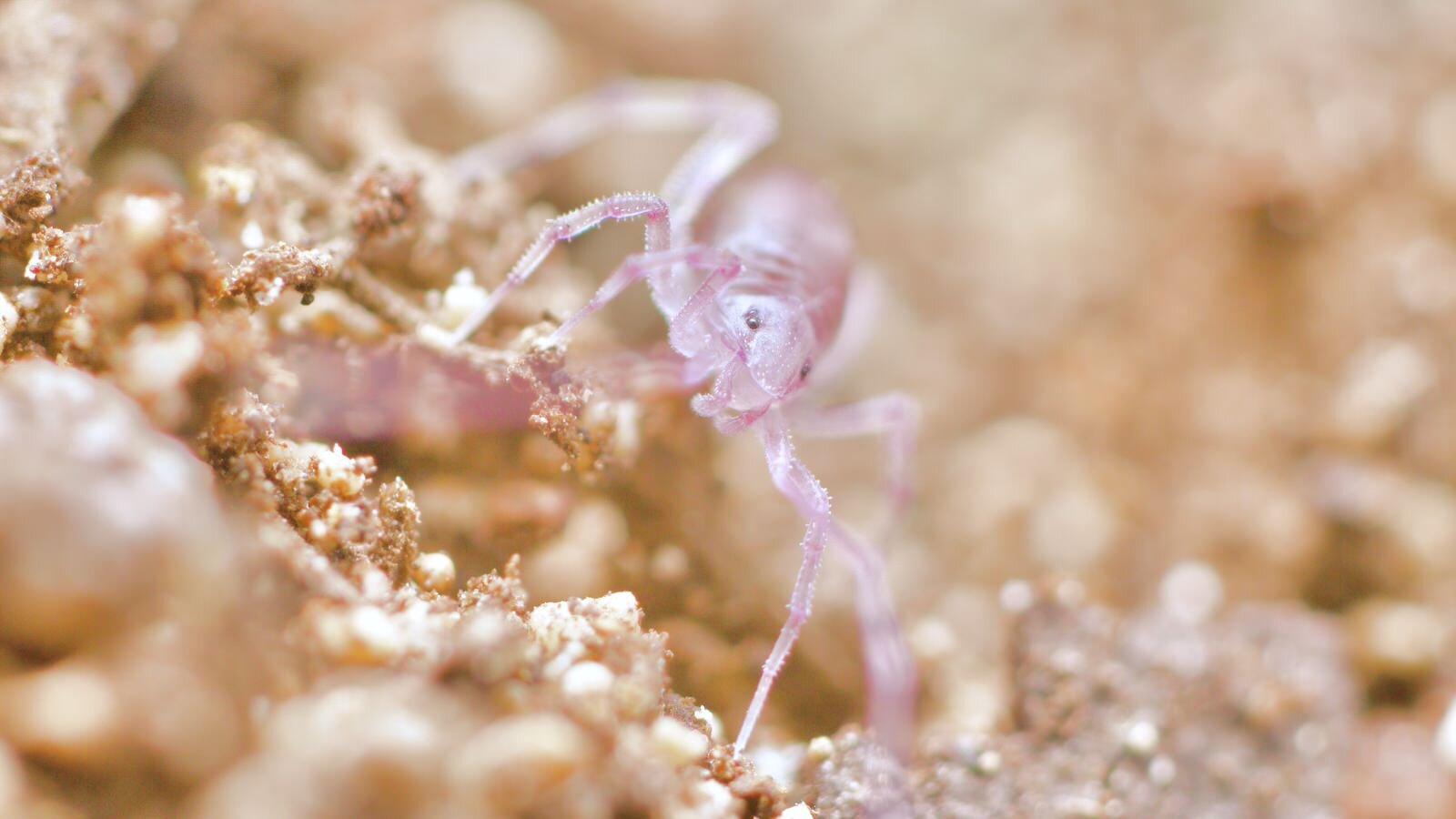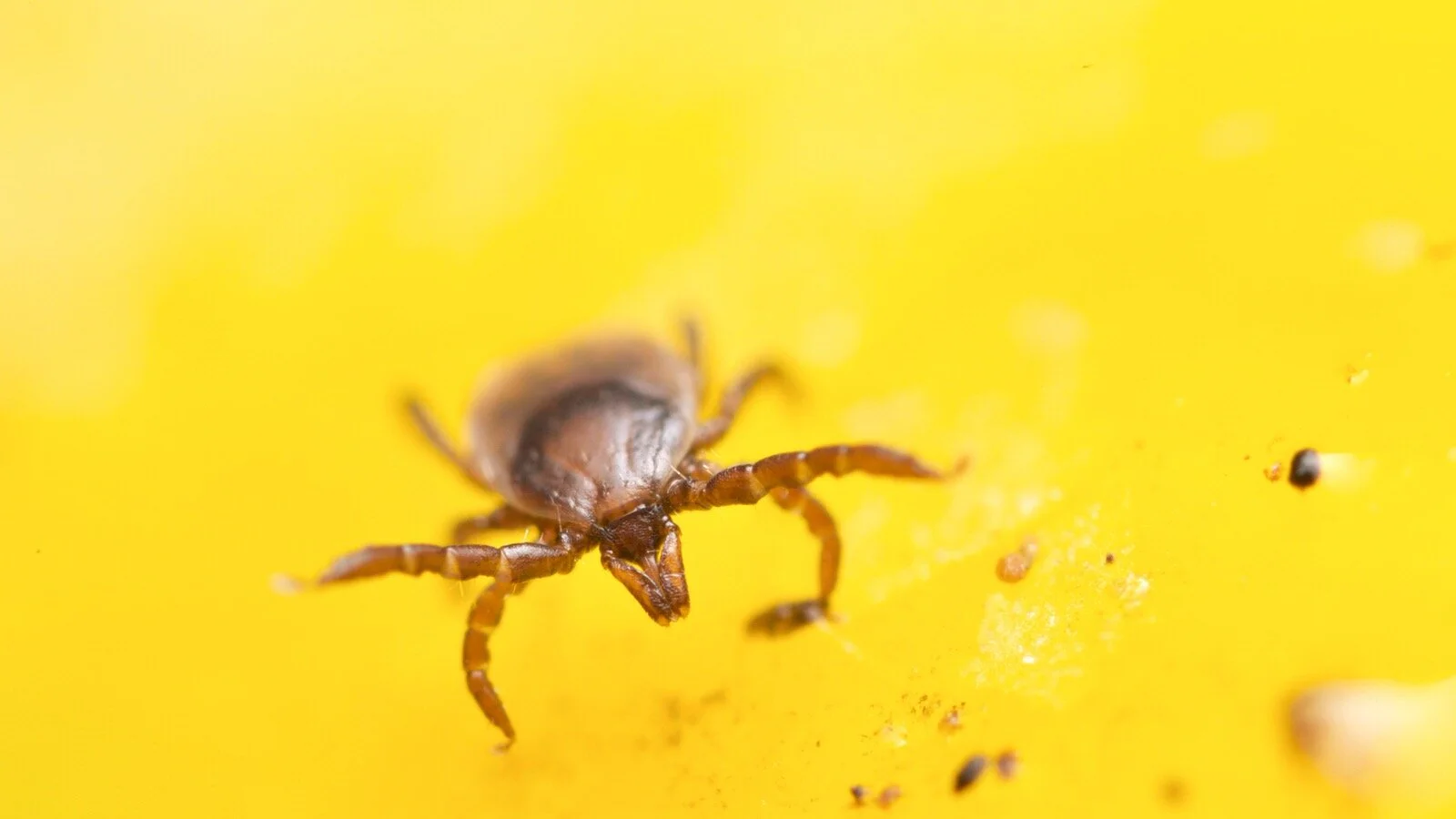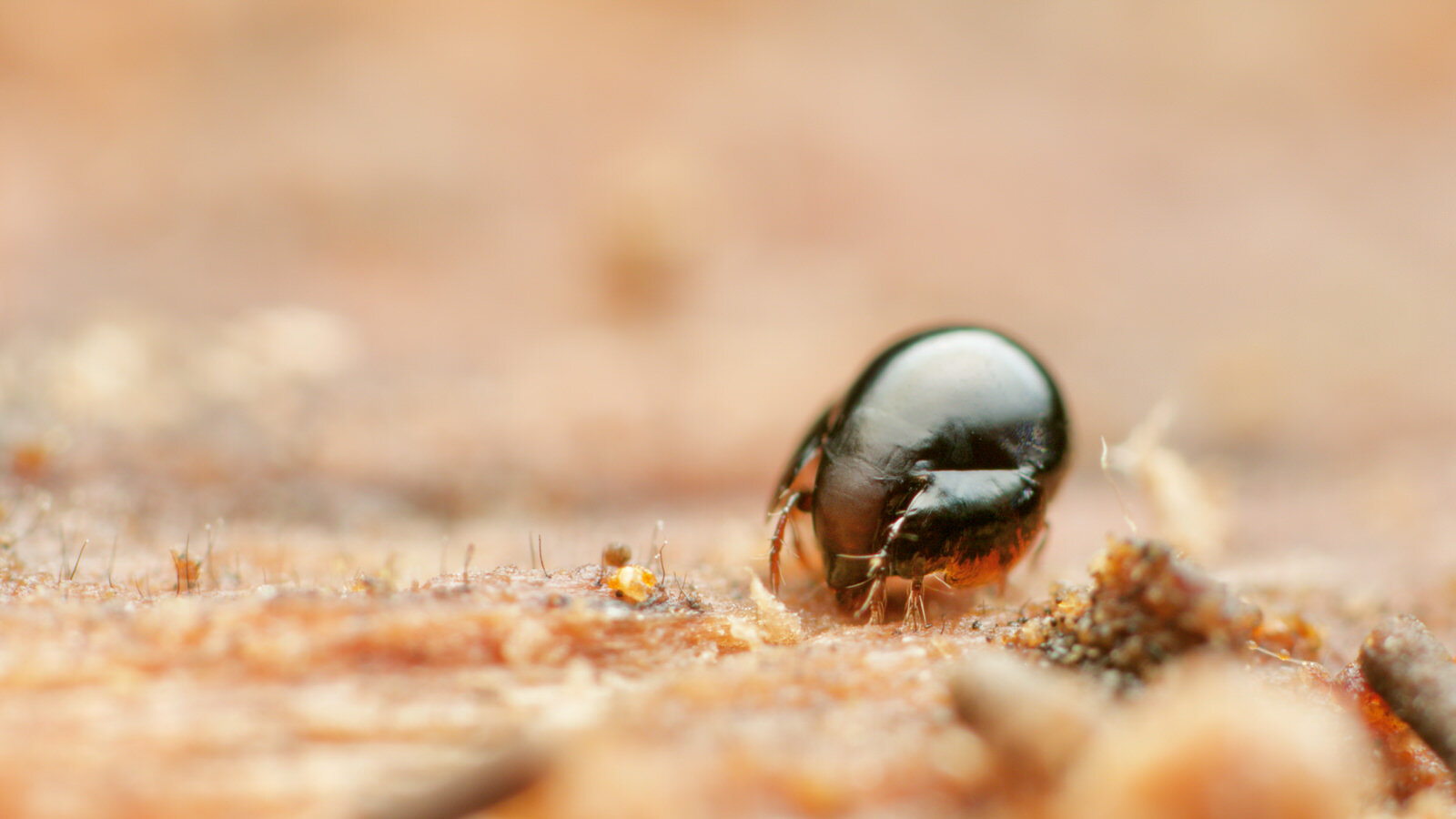
All about soil mites
Soil mites are arachnids, in the taxon Acari and form a large and important part of the soil mesofauna, the group of disparate and hauntingly beautiful tiny animals that live in the soil. They are an integral part of the soil food web, and play an important role in decomposition and nutrient cycling, helping to spread beneficial bacteria and spores and aid soil fertility.
Soil mites are incredibly diverse and tiny relatives of spiders, scorpions and harvestmen. They've been around in one form or another at least since the Devonian, around 400 million years and are able to live in more places than pretty much anything else on the planet except perhaps nematodes.
Out of all the soil mites, the most numerous are the oribatid mites, also known as beetle, box, armoured, seed or moss mites, trundling slowly and gloriously through the bryophytes, fungal hyphae and leaf litter across the world. However, there is a whole wealth of other mites, such as the ‘sucking’ members of Prostigmata and the predatory, mesostigmatan mites.
I'll just leave this here- a mesostigmatic mite eating its own young. They are truly the evil overlords of soil mesofauna.
Labidostomatidae, New Zealand Feb 2016
Soil mites are one of the most numerous of the soil animals, closely but cautiously followed by Collembola. Even Astigmatina, the group of mites not usually associated with the soil, are numerously covering much of everything else. Mites can range from the microscopic, 0.1mm of dust mites and similar, up to some species of velvet mites, veritable giants at around 12mm. They have truly deserved their name of mite, meaning small or tiny. And the small size remains unchanged going back through the fossil record.
Knemidocoptes gallinae, the depluming mite, a parasite of chickens, gives birth to live young.
In fact, almost every animal and plant so far studied appears to have at least one species of mite associated with it.
It's estimated that each adult human being might be supporting over a million Demodex follicle mites, with a little colony of mites able to live in a single hair follicle. They live and die without ever leaving your face.
Poor Little Mites
Mites are often dismissed for looking a little off-putting. Not as cute or as pretty as Collembola for example. I used to think this myself. But I changed my mind. I've realised that you just need to get to know them and they become beautiful, like this member of the Prostigmata, Anystidae family, from New Zealand, an Erythracarus species.
Erythracarus species, Tairua New Zealand March 2014
And this velvet mite, already unusual enough by being white rather than red, is arrestingly beautiful too.
A velvet mite, South Island, NZ.
Or these rather sweet looking juvenile mites….
Juvenile Podothrombium mite
Juvenile Bdellidae mite
How To Get Rid Of Soil Mites In Your Garden: A Guide
Many gardening sites, who should really know better, will often push lazy misinformation with lead articles and titles like ‘How To Get Rid Of Soil Mites In Your Garden’ (which you most certainly should never ever do) or describe soil mites as ‘fast moving white bugs in the soil’ (which they’re usually not) and offer solutions to how you can rid your soil of mites entirely (which you absolutely should not). This goes double for springtails, as the poor things have even more of the same wretched pile of bad science and misinformation aimed at them.
It’s deeply upsetting to see how many lies and incorrect information are peddled as facts in order to sell company pesticides and herbicides or drive worried and easily led consumers to give pest removal companies a job. They intend to provide the perfect clickable answers to the top search queries people ask about soil mites:
Are soil mites harmful to plants/humans/reptiles/dogs/snails?’
How do I get rid of soil mites?
Are soil mites bad for plants/humans?
To reiterate again, trying to remove soil mites from your soil is in every way a bad idea and truly terrible advice. A more nuanced approach would be to explain that while spider mites can be an occasional problem for household and greenhouse plants, they are just one sort of mite, and soil mites are actually hugely, massively, mightily diverse and are incredibly beneficial and essential in any healthy garden soil. Mites should always be supported, loved and encouraged every day. A well balanced and healthy soil is full of life, creating a soil that is able to grow healthy strong plants that are able to resist and recover from most pest damage, except cows.
A mite bit confusing
Mites don't have heads. They have a structure called the gnathsoma, housing the mouth and feeding parts. Any inkling of a brain, or eyes, if present, are on or in the idiosoma, the big, body-like structure behind it.
Mites are incredibly ancient and diverse and are notoriously difficult to make sense of, taxonomically. Superorders get made and then dissolved, orders get remade, removed, families get shuffled, promoted, demoted or merged... Only the very basics have been decided and agreed upon. There are so many potential traps and confusion, especially when talking about orders and super orders, cohorts and clades, that I'm just going to try and avoid the whole thing as much as I can and hope it all goes away.
So, in what is a constantly changing and evolving family tree, here is an attempt at a hopefully reasonably up to date and roughly accurate overview at least. That should be safe.
Mites, or the Acari seem to divide into two lineages. These are the Parasitiformes and Acariformes. Until very recently, Opilioacarida still ranked as a third lineage, but now resides in Parasitiformes.
So...
PARASITIFORMES
Ixodida- the hard and soft ticks, described in more detail in the link below.
Holothyrida- rare, Gondwanan distributed mites that are carrion feeders, a kind of missing link between the ticks and other mites.
Mesostigmata- the mainly free-living, soil-loving, often predatory mites, described in more detail below.
Opilioacarida- thought to be amongst the most primitive of all mites. They retain segmentation of the abdomen, as well as often having six eyes and strong pigmentation. They are described in more detail in the link below.
ACARIFORMES
A large percentage of the world's species of mites are members of the Acariformes, whether they know it or not.
Within Acariformes, the Sarcoptiformes and Trombidiformes form two rough halves, splitting not quite down the middle. But each of the titles hides, as one internet mite site cautions, a 'morass of subdivisions’. The brief descriptions following will hopefully act as a mite-friendly Sweet Track (an ancient trackway found buried in the peat that crossed wetlands in South Somerset, 3500 years ago) over the top.
The Sarcoptiformes consist of-
Most of Endeostigmata- an uncommon and primitive group of mites, often found living in surprisingly extreme environments.
Oribatida- the world-wide and very common mites, including the Astimatina. They are described in more detail in the link below.
The Trombidiformes consist of-
Sphaerolichida- containing two Endeostigmata families left over from the Sarcoptiformes.
Prostigmata- containing many 'pest' mites like velvet mites, spider mites and the infamous pre-adult mites commonly known as chiggers. Prostigmata are described in more detail in the link below.
Mite Orders
Here are the links to the mite orders and sub-orders including those ticks…
Prostigmata
Mesostigmata
Oribatida
Opilioacarida
Ixodida
Damaeidae, a common mite family that builds a protective layer of detritus on its back.
